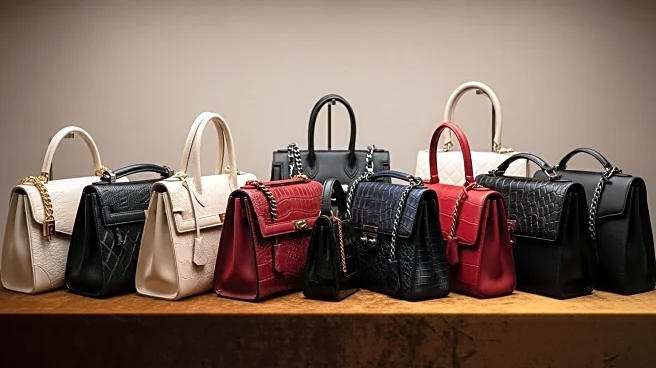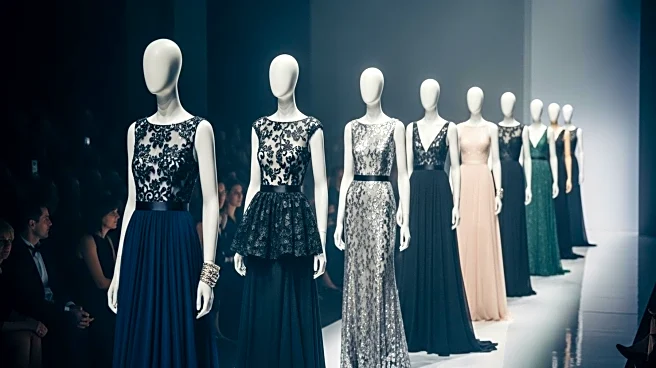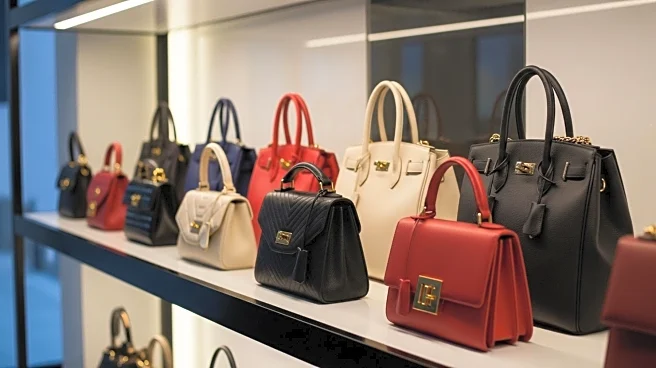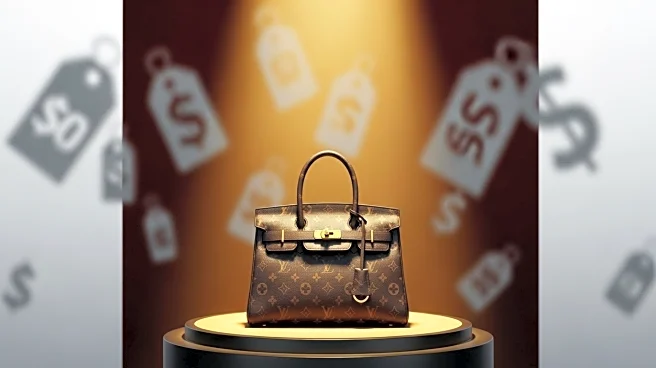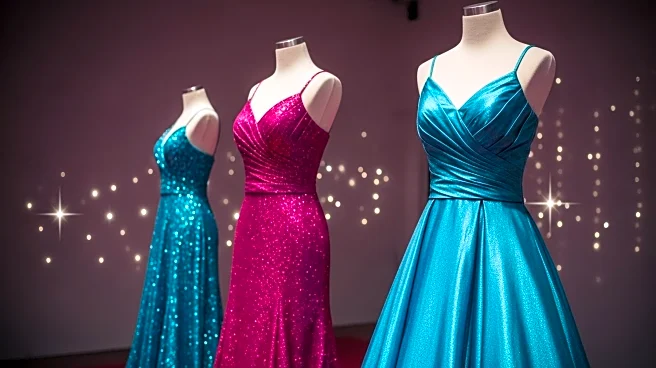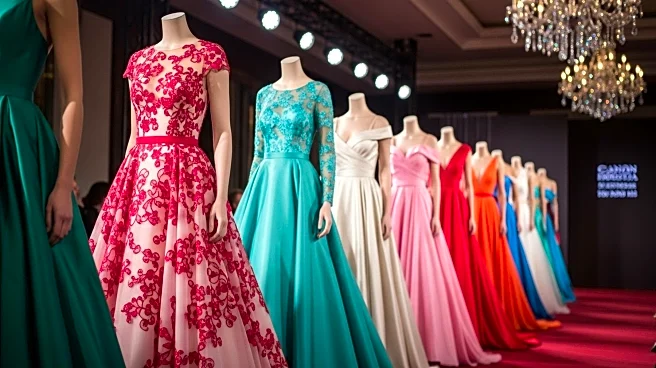What is the story about?
What's Happening?
U.S. tariffs of 15 percent on imports from the European Union are impacting luxury brands, leading to increased activity in the secondhand market. Consumers are turning to resale platforms for more affordable luxury options as brands like Hermès, Louis Vuitton, and Chanel continue to raise prices. The secondhand market offers savings, authenticity, and sustainability, making it an attractive alternative. Despite the tariffs, average selling prices on resale platforms have remained stable, benefiting consumers seeking luxury goods at lower costs. The demand for pre-owned luxury items has remained steady, with brands such as Chanel, Hermès, Louis Vuitton, Dior, and Gucci being the most sought-after.
Why It's Important?
The shift towards the secondhand luxury market highlights the impact of economic pressures on consumer behavior. As tariffs and price hikes make new luxury items less accessible, resale platforms are capturing a growing segment of the market. This trend benefits consumers who are economically sensitive and prefer pre-owned items over exiting the luxury market entirely. The stability in resale prices despite macroeconomic challenges underscores the resilience of the secondhand market. Additionally, the demand for vintage items is rising, offering aspirational buyers a more affordable entry into luxury brands. This shift could lead to increased inventory availability as consumers look to monetize their existing luxury goods.
What's Next?
Resale platforms are likely to continue benefiting from the economic environment, with potential growth driven by increased inventory availability. As consumers seek to convert luxury goods into cash, the secondhand market could see further expansion. The introduction of new collections by creative directors at major fashion houses may also impact resale demand, potentially increasing interest in both current and vintage items. Resale platforms may focus on strategic campaigns to attract value-driven buyers, emphasizing the appeal of vintage icons at lower price points. The ongoing challenge for the resale market will be acquiring sufficient inventory to meet consumer demand.
Beyond the Headlines
The rise of the secondhand luxury market may have broader implications for sustainability and consumer culture. As more consumers opt for pre-owned items, the fashion industry could see a shift towards more sustainable practices. This trend may also influence brand strategies, prompting luxury brands to consider their pricing models and the impact of tariffs on consumer access. The growing interest in vintage items reflects a cultural appreciation for legacy and original-era designs, potentially influencing future fashion trends. The secondhand market's resilience amidst economic uncertainty highlights the evolving dynamics of consumer behavior and luxury consumption.
AI Generated Content
Do you find this article useful?
